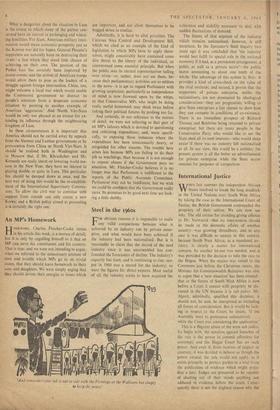Steel in the 196os
FOR obvious reasons it is impossible to make any valid comparisons between what is achieved by an industry run by private enter- prise, and what would have been achieved if the industry had been nationalised. But it is reasonable to claim that the record of the steel industry since it was unscrambled has con- founded the forecasters of decline. The industry's capacity has risen, and is continuing to rise; out- put in 1960 was a record for the industry; so were the figures for direct exports. Most useful of all, the industry seems to have acquired the coherence and stability necessary to deal with sudden fluctuations of demand.
The future of that segment of the industry which remains nationalised, however, is still uncertain. In the Spectator's Steel Inquiry two years ago it was concluded that `the industry would best fulfil its special role in the national economy if it had, as a permanent arrangement, a public as well as a private sector'—the public sector amounting to about one tenth of the whole. The advantage of this system is, first : it provides a kind of cross-check on the value of the rival methods; and second, it proves that the supporters of private enterprise, unlike the nationalisers, are not dominated by ideological considerations—they are pragmatists, willing to give State enterprises a fair chance to show how they can compete in conditions of co-existence. There is no immediate prospect of Richard Thomas and Baldwins being returned to private enterprise; but there are many people in the Conservative Party who would like to see the State shed all its steel interests—who would sleep easier if there was no industry left nationalised at all. In our view, this would be a mistake; the present system is all the better an advertisement for private enterprise while the State sector remains for purposes of comparison..










































 Previous page
Previous page